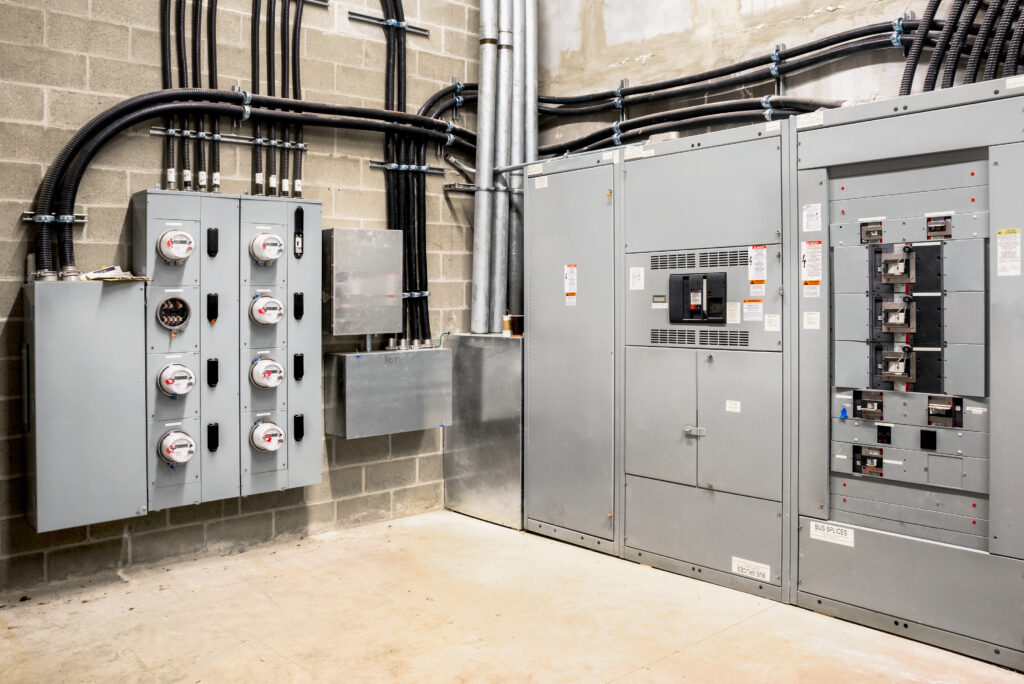
As energy prices rise, business and facilities management leaders need an effective energy management plan to help minimize the impact on profitability.
Depending on your industry and location, energy costs can take a significant chunk out of your bottom line. Moreover, businesses face increasing pressures from consumers and governments to reduce their impact on climate change by lowering their greenhouse gas (GHG) emissions.
On the plus side, businesses will have new opportunities to offset investments in energy efficiency and renewable energy through tax credits and other incentives funded by the Inflation Reduction Act, which earmarks $369 billion to fight climate change.
While many large companies have undertaken energy efficiency initiatives, progress may have stalled, or ROI may be falling short because they either lack a detailed energy management plan or their plan needs a reboot.
Fortunately, there’s ample guidance on how to create — or revamp — an energy management plan for your business and facilities. Here’s a summary of the key steps, based on insight from the U.S. Energy Star program for business and Tony Parkinson, chair of the Global Sustainability Council at City Facilities Management, which supports leading companies in achieving their energy management, emissions reduction, and cost-saving goals around the world.
7 steps to create an energy management plan
1. Assess current energy performance
To identify energy-saving opportunities, you need to understand your organization’s current and past energy use.
“The very first stage of any energy management plan is understanding where you are — your assets, utilization, and how much it costs,” said Parkinson.
Key steps for conducting an energy assessment include:
- Gathering and tracking data on energy use and costs over time
- Establishing the baseline for measuring progress
- Benchmarking energy performance across facilities, peers, and competitors
- Analyzing your energy use patterns and trends
- Conducting technical assessments and audits to determine facility and equipment performance
The Energy Star program provides two useful (and free) assessment tools designed for business:
- The Energy Program Assessment Matrix helps you see how your company’s energy management program compares to industry best practices.
- The Facility Energy Assessment Matrix helps assess how well an individual building is implementing your organization’s energy program.
2. Set and commit to an energy policy and goals
As with any major business initiative, the most important factor for successful energy management is getting commitment from the top. Does your company have board-level leaders with accountability for energy? Are there key performance indicators (KPIs) and operational structures in place that are dedicated to managing energy consumption?
If you’re in the beginning stages, you may not have that level of commitment. If that’s the case, facilities leaders can start building a business case by developing estimates for cost savings. According to the Energy Star program, most companies that have done little to manage energy can easily achieve a 10% reduction in energy use early on in a program. These steps for determining the financial value of energy management can help.
| Smart energy tip: When calculating potential ROI on energy management, be sure to use energy price projections for the coming years instead of today’s prices. |
Create a solid foundation for energy management by setting an energy policy that formalizes and articulates support and commitment to energy efficiency from senior leaders. Then communicate the energy policy to employees, shareholders, the community, and other stakeholders.
Back up your energy policy by setting clear and measurable goals to drive energy management improvement and create a baseline for tracking progress. Communicate energy goals to set accountability among energy team members and partners, while also motivating the broader staff.

At a minimum, businesses need to ensure their goals will meet local, state, and federal regulatory requirements for energy efficiency and GHG emissions. For example, California recently adopted the strictest building energy efficiency standards, called Title 24, in the U.S., requiring all new commercial buildings to be zero net energy (ZNE) by 2030. While this only applies to new construction, the standards can serve as useful guidelines for retrofitting existing buildings. For companies that want to get ahead of future regulations that may be adopted nationally or in the states where they operate, the California standards can also provide a guidepost, Parkinson suggested.
Steps to develop effective energy performance goals include:
- Determining scope by identifying organizational, regulatory, and time parameters for goals.
- Estimating improvement potential based on the assessment.
- Setting clear, measurable goals with target dates for the entire organization, facilities, and other aspects of energy use.
3. Assemble your energy team
Set up your company for success by creating an energy team with accountability for developing and implementing the energy management plan. Depending on the business size, this may include representatives from:
- Facilities and building management
- Sustainability
- Operations and maintenance
- Corporate real estate and leasing
- Finance and procurement
- Construction management
Parkinson emphasized the finance role as especially essential because finance team members can help provide the energy cost data and its impact on profitability, calculate ROI projections for specific strategies, and identify the capital required to reach your energy goals.
External partners can also play important roles in achieving energy management goals. Key partners may include:
- Facilities management services
- Contractors and suppliers
- Utilities and energy services companies (ESCOs)
- Industry subject matter experts such as state and federal energy specialists, consultants, and other knowledge centers, such as the Association of Energy Engineers.
4. Identify energy strategies, technologies, and best practices
Your energy team is responsible for determining what strategies, processes, and technologies are needed to achieve its energy reduction goals. Business size, industry, and location are major factors in deciding which approaches and investments are the best fit for your company. For example, refrigeration in food and grocery retailers uses so much energy and the profit margins are so slim that an EPA report notes that a 10% reduction in energy costs for the average supermarket is equivalent to increasing net profit margins by 16%.
With such a potential impact on profitability in play, it makes sense for grocery retailers to pursue a range of energy strategies and investments targeting refrigerationTony Parkinson
Four leading energy cost-saving strategies for businesses include:
- Energy management systems (EMS): Companies can purchase their own EMS or contract with a partner to provide this technology, which leverages big data and AI to control energy consumption and carbon emissions for a building or across an entire real estate portfolio. For example, City typically achieves a minimum of 10 percent reduction in energy use through EMS systems alone. Further opportunities exist to control loads by developing demand side management strategies or by entering into demand response schemes.
- Energy-efficient equipment and lighting: Businesses can achieve significant energy savings with more energy efficient HVAC, refrigeration, lighting, and other equipment.
- Energy performance contracting: Organizations can partner with an energy service company to tackle maintenance backlogs and facility improvements with energy efficiency solutions, using the energy savings generated to cover the costs.
- Energy-efficient buildings: As part of their energy plan, many companies require all new construction to meet increased standards for energy efficiency.

5. Create your energy action plan
Develop an action plan that specifies processes, projects, and roles to serve as a detailed roadmap to achieving your energy goals.
Key steps to creating an energy action plan include:
- Identify the gaps between current performance and goals based on your energy assessment and audit.
- Determine the technical steps needed to upgrade or bring your facilities from their current performance level to your stated
- Define performance targets and set timelines for each facility, department, and operation to track progress.
- Establish a system to track and monitor progress on action items, measuring both energy use and activities.
- Determine internal and external roles and responsibilities for executing on the plan.
- Quantify and secure the resources needed, including cost estimates, business cases, and funding approvals.
6. Execute on your energy plan
Winning the support and involvement of key people at all levels will mean the difference between meeting your energy goals or falling short.
Focus on these steps:
- Communicate targeted information for key audiences about your energy management plan and their roles.
- Build support at all levels for achieving your energy goals.
- Develop your staff through training, information, and sharing best practices and lessons learned.
- Create incentives to motivate staff to improve energy performance through competitions, recognition, and inclusion in staff evaluations when appropriate.
- Track, monitor, and communicate progress on a regular basis.
| Smart energy tip: Make sure everyone involved in facilities management, including internal staff and external partners, has a high level of energy awareness and of the role they play in achieving energy goals. Share facts such as overall energy costs, costs to operate equipment, and the impact on the environment. |
7. Evaluate progress on energy goals and celebrate wins
Compare performance to goals by conducting a formal review of energy use data and progress on specific plans. Review your energy management plan to understand what worked and what didn’t, and identify lessons and best practices.
Communicate and celebrate your success both internally and externally. Reward and recognize individual staff and teams for energy accomplishments compared to your goals. This is also the time to identify additional savings opportunities to leverage in future initiatives, assess, and adjust your plan.
Keep in mind that after the initiatives have been executed and efficient assets are in place, it’s critical to ensure that energy performance is continually monitored with any anomalies actioned through central and field processes. It’s been shown that even in controlled environments, energy can drift by 2% YoY without an ongoing central monitoring resource system.
Get the resources you need to build your energy plan
These steps are just a summary of what it takes to create and implement an effective energy management plan. Wherever you are on your energy journey, you’ll find there are a wealth of resources, as well as rewards both financial and those less easily measured, such as increased support from customers, employees, shareholders, and other stakeholders.
If you’re looking for a partner with global experience to help with either planning or hands-on implementation, the City facilities energy team is ready to assist.
“We’ve helped large organizations build solid energy plans across their entire enterprise, beginning with strategy development at the board level, to creating the pillars and actions at the facility level, so they can understand where they need to invest and how they need to target,” said Parkinson, who recently relocated to the U.S. to bring his experience helping larger retailers and other companies improve their energy performance to achieve savings and comply with the strict energy and emissions regulations in the UK and Europe.

 2016: City US is established in North America, in partnership with Southeastern Grocers (SEG), servicing over 750 supermarkets across 7 southern states.
2016: City US is established in North America, in partnership with Southeastern Grocers (SEG), servicing over 750 supermarkets across 7 southern states. 1985: Willie and Susan Haughey establish City Refrigeration Holdings (UK) Ltd in Glasgow, UK.
1985: Willie and Susan Haughey establish City Refrigeration Holdings (UK) Ltd in Glasgow, UK. 2009: City Australia launches in Melbourne, in partnership with Coles, servicing over 700 supermarkets across the country.
2009: City Australia launches in Melbourne, in partnership with Coles, servicing over 700 supermarkets across the country. 2015: City Asia launches in Kuala Lumpur, Malaysia, in partnership with Dairy Farm, servicing over 205 supermarkets across the region.
2015: City Asia launches in Kuala Lumpur, Malaysia, in partnership with Dairy Farm, servicing over 205 supermarkets across the region.